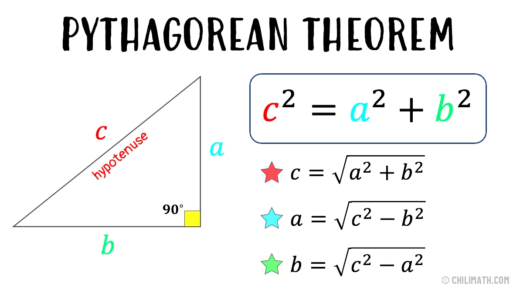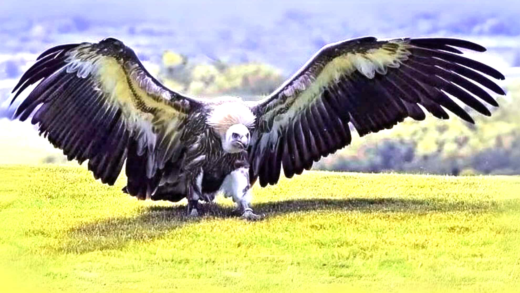This article explores the differences and similarities between hawks and falcons, including their physical traits, hunting techniques, diets, and roles in ecosystems. It highlights fun facts, dietary comparisons, vocal differences, and their importance in nature, providing a comprehensive understanding of these two bird species.
Physical Differences: What’s the Difference?
Hawks vs Falcons – understanding their physical differences is crucial for bird enthusiasts and nature lovers. These two types of birds of prey, while similar in some aspects, exhibit distinct physical characteristics.
- Size: Hawks are generally larger than falcons. For instance, a red-tailed hawk can have a wingspan of up to 4 feet, while a peregrine falcon’s wingspan typically ranges from 2.5 to 3.5 feet.
- Beak Shape: Hawks have broader, more hooked beaks designed for tearing flesh. Falcons, on the other hand, possess a more slender beak with a notch, which helps them kill their prey quickly.
- Body Structure: Hawks tend to have stockier bodies and broader wings, making them adept at soaring and gliding. Falcons are more streamlined, built for speed and agility.
- Coloration: Hawks often exhibit a range of browns and whites, providing camouflage in wooded areas. Falcons usually showcase more vibrant markings, with the peregrine falcon being known for its distinctive blue-gray feathers and vertical black streaks.
In summary, while both hawks and falcons are impressive birds, their physical differences are evident in size, beak shape, body structure, and coloration. Understanding these characteristics can enhance your birdwatching experience.
Identifying the Peregrine Falcon: Tips and Tricks
Identifying the peregrine falcon can be a thrilling challenge for bird watchers. This species is renowned for its speed and striking appearance. Here are some tips to help you spot this remarkable bird:
- Look for the Markings: The peregrine falcon has a blue-gray plumage with a distinct black cap on its head and a pale throat. The belly is often spotted with dark vertical stripes.
- Observe the Flight Pattern: Unlike hawks, which soar gracefully, peregrine falcons display a powerful, rapid flight. They often dive at incredible speeds when hunting.
- Listen for Calls: The vocalizations of a peregrine falcon include a series of sharp, high-pitched calls. Familiarizing yourself with their sounds can aid in identification.
- Watch for Hunting Behavior: When hunting, peregrine falcons can be seen perched high on cliffs or tall buildings, scanning the ground for prey.
By focusing on these identifying features, you’ll become more adept at spotting the peregrine falcon in the wild.
Common Types of Hawks: A Quick Guide
Hawks are a diverse group of birds, and knowing the common types can enhance your birdwatching experience. Here’s a quick guide to some of the most recognized hawks:
- Red-tailed Hawk: One of the most common hawks in North America, recognizable by its red tail and broad wings.
- Cooper’s Hawk: A medium-sized hawk known for its agility in flight and preference for wooded areas.
- Sharp-shinned Hawk: Smaller than the Cooper’s hawk, it has a more rounded tail and is often found in forests.
- Swainson’s Hawk: Known for its long wings and distinctive coloration, often seen soaring in open fields.
These are just a few examples, but each hawk species has unique traits that make them fascinating to observe. Understanding these common types will help you appreciate the beauty and diversity of hawks in the wild.
Hunting Techniques: How Do They Catch Their Prey?
Hawks vs Falcons – both use unique hunting techniques to catch their prey. Understanding these methods not only highlights their adaptability but also showcases their roles as predators in the ecosystem.
- Hawks: They typically rely on surprise and stealth. Hawks often perch quietly in trees or high points, scanning the ground for movement. Once they spot potential prey, they use a powerful, swift dive to capture it. Their strong talons are designed for gripping and holding onto their catch.
- Falcons: In contrast, falcons are known for their incredible speed. The peregrine falcon, for instance, is the fastest bird in the world, reaching speeds of over 240 mph during its hunting stoop (high-speed dive). They often hunt in open areas, using their keen eyesight to spot prey from great distances.
- Teamwork: Some hawks, like the Cooper’s hawk, will work together in pairs to flush out birds from dense cover, while falcons usually hunt alone.
In summary, hawks and falcons exhibit distinct hunting techniques suited to their environments and prey. While hawks utilize stealth and strength, falcons rely on speed and agility.
Behavioral Differences: Hawks vs Falcons
When comparing hawks and falcons, their behavioral differences are as fascinating as their physical traits. Understanding these behaviors can enhance your appreciation for these birds.
- Social Behavior: Hawks tend to be more solitary than falcons. Many hawk species prefer to hunt alone or with a mate, while falcons can sometimes be seen in small groups during migration.
- Territoriality: Hawks often establish territories that they defend vigorously, especially during breeding season. Falcons, particularly the peregrine, are known to be territorial as well, aggressively defending nesting sites from intruders.
- Vocalizations: Hawks produce a variety of calls, often characterized by sharp, piercing sounds. Falcons, on the other hand, have a distinct, high-pitched series of vocalizations that can be quite different from hawks.
These behavioral differences underline the unique adaptations of hawks and falcons, making them fascinating subjects for bird watchers and nature enthusiasts alike.
Typical Habitats: Where Do They Live?
Understanding where hawks and falcons live is essential for appreciating their lifestyles. Both birds occupy a range of habitats, but they tend to prefer different environments.
- Hawks: Generally, hawks are found in diverse habitats, including forests, grasslands, and urban areas. They favor open spaces with nearby perches to spot prey, such as trees or telephone poles.
- Falcons: Falcons, particularly peregrines, thrive in various environments, from coastal cliffs to urban skyscrapers. They often nest on ledges and high structures, taking advantage of their excellent vantage points for hunting.
- Adaptability: Both hawks and falcons exhibit remarkable adaptability, allowing them to thrive in changing environments. For instance, urban areas have become increasingly popular habitats for peregrine falcons.
In conclusion, while hawks and falcons have overlapping habitats, their preferences reflect their hunting styles and behaviors, making each species unique in its ecological niche.
Fun Facts: Cool Tidbits about Peregrine Falcons and Hawks
Hawks vs Falcons always brings up fascinating discussions, especially when it comes to unique facts. Here are some cool tidbits that might surprise you:
- Speed Records: The peregrine falcon is not just fast; it’s the fastest bird in the world, capable of reaching speeds over 240 mph during its hunting dives. In comparison, the red-tailed hawk is known for its impressive soaring abilities but doesn’t match that speed.
- Breeding Habits: Peregrine falcons often reuse their nests year after year, while hawks typically build new nests each breeding season. This behavior showcases their adaptability and resourcefulness.
- Global Distribution: Hawks can be found on every continent except Antarctica, while peregrine falcons have an even broader range, inhabiting all continents except for extreme polar regions.
- Longevity: In the wild, hawks can live up to 20 years, while peregrine falcons have a lifespan of around 10-15 years. Their longevity can be influenced by environmental factors and availability of food.
These fun facts highlight the remarkable traits and adaptations of both hawks and peregrine falcons.
Diet Comparison: What Do They Eat?
When discussing hawks vs falcons, their diets reveal significant differences. Understanding what they eat can provide insight into their hunting habits and ecological roles.
- Hawks: Most hawks are opportunistic feeders, preying on small mammals, birds, and reptiles. Their diet may include:
- Rabbits
- Squirrels
- Birds like doves and sparrows
Hawks use their strength and stealth to capture their prey from perches.
- Falcons: Peregrine falcons primarily feed on birds, often catching them in mid-air. Their diet consists of:
- Songbirds
- Ducks
- Shorebirds
Falcons utilize their speed and aerial agility to hunt effectively.
In summary, while both birds are carnivorous, hawks have a broader diet that includes various small animals, whereas falcons specialize in hunting other birds.
Vocal Differences: Do They Sound Different?
Hawks vs Falcons can also be distinguished by their vocalizations. These calls play a crucial role in communication and territory establishment.
- Hawks: Generally, hawks produce a series of sharp, piercing calls that can carry over long distances. Their vocalizations are often used to mark territory and communicate with mates.
- Falcons: In contrast, falcons have a distinct, high-pitched series of vocalizations. Their calls can sound like a rapid sequence of “kak-kak-kak” and are often used during courtship and to signal distress.
Understanding these vocal differences can enhance birdwatching experiences, helping enthusiasts identify these birds by sound alone.
Ecosystem Role: Why Are They Important?
Both hawks and falcons play vital roles in their ecosystems, making them important species for ecological balance.
- Population Control: By preying on small mammals and birds, hawks help regulate populations, preventing overpopulation and ensuring ecological balance.
- Indicators of Ecosystem Health: Both birds of prey are considered indicators of environmental health. Their presence signifies a balanced ecosystem, while declines in their populations can indicate environmental issues.
- Food Web Contribution: Hawks and falcons contribute to the food web, providing sustenance for larger predators and scavengers.
In conclusion, hawks and falcons are not just fascinating birds but also crucial components of their ecosystems, influencing the health and balance of their habitats.





Comments are closed.